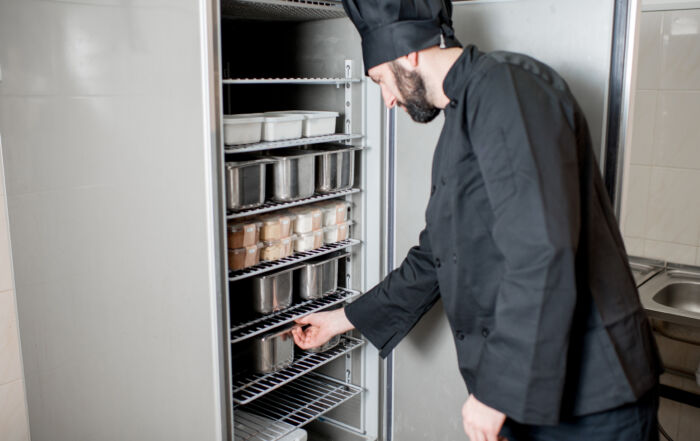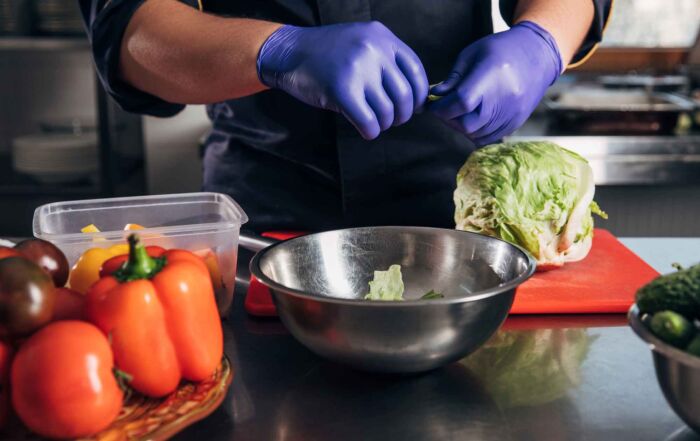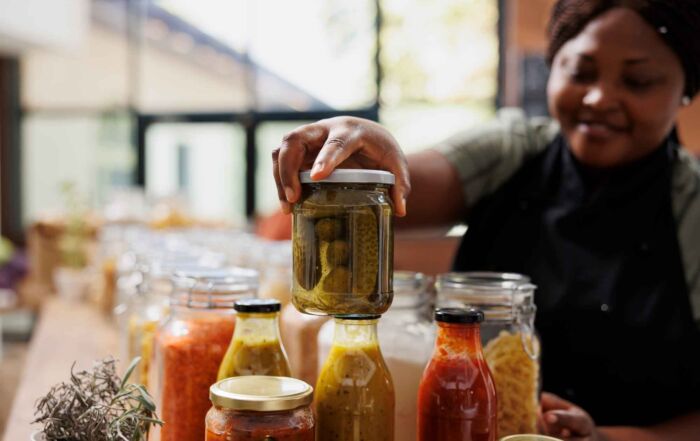Greens & Spinach – Please Lettuce Be Safe to Eat
 According to the new food nutrition pyramid, we are to eat at a minimum, around 3 cups of dark green vegetables along with other servings of fruits and vegetables each week. That is becoming more difficult as outbreaks such as E. coli 0157:H7 creates bad news for the produce industry, not to mention the victims.
According to the new food nutrition pyramid, we are to eat at a minimum, around 3 cups of dark green vegetables along with other servings of fruits and vegetables each week. That is becoming more difficult as outbreaks such as E. coli 0157:H7 creates bad news for the produce industry, not to mention the victims.
What is E. coli bacteria? The E. coli O157:H7 is what we call a low dose bacterium (very few organisms can cause illness for high risk people) that causes diarrhea that is often bloody; the diarrhea can be accompanied by abdominal cramps. Fever may be absent or mild. Symptoms usually occur within 2-3 days following exposure, but may occur as soon as 1 day following exposure or up to one week following exposure. Healthy adults can typically recover completely from E. coli O157:H7 exposure within a week. However, some people, especially young children and the elderly, can develop Hemolytic Uremic Syndrome (HUS) as a result of exposure to E. coli O157:H7, a condition that can lead to serious kidney damage and even death. (Source: FDA Bad Bug Book)
What does the Food & Drug Administration recommend for bagged spinach? Currently, the FDA advises that people not eat any fresh spinach or salad blends containing fresh spinach that are consumed raw. Individuals who believe they may have experienced symptoms of illness after consuming fresh spinach or salad blends containing fresh spinach are urged to contact their health care provider. (Source: FDA )
For the retail grocery and restaurant industry, FDA advises that people not eat any fresh spinach or salad blends containing fresh spinach that are consumed raw. Individuals who believe they may have experienced symptoms of illness after consuming fresh spinach or salad blends containing fresh spinach are urged to contact their health care provider.
Isn’t lettuce and spinach washed by the produce processor? In the case of bagged lettuce or spinach labeled ready-to-eat, triple washed, or chlorinated – yes. With E. coli 0157:H 7 contamination, washing won’t get rid of the tenacious bug, though thorough cooking can kill it. Scientific studies have demonstrated that washing produce in cold, chlorinated water will reduce microbial populations by only 90 – 99 percent. Microbial reduction on lettuce/leafy greens surfaces is a disinfectant concentration-by-time dependent relationship and human pathogens (like Salmonella and E.coli), if present on the surface of lettuce/leafy greens, may not be completely eliminated by washing. This is because microorganisms adhere to the surface of produce and may be present in nooks and crannies where water and wash water disinfectants cannot penetrate. Microorganisms have a greater affinity to adhere to cut surfaces than uncut surfaces. So, washing ready-to-eat lettuce and leafy greens products during fresh-cut processing is necessary but does not imply that fresh cut produce is free of microbes. In fact, fresh-cut produce should be expected to have a normal population of harmless microorganisms associated with it.
FDA 2013 Food Code statements — For retail and foodservice establishments, the U.S. FDA 2013 Model Food Code Section 3-302.15 specifies: “Raw fruits and vegetables shall be thoroughly washed in water to remove soil and other contaminants before being cut, combined with other ingredients, cooked, served, or offered for human consumption in ready-to-eat form.” Packaged produce labeled “ready-to-eat,” “washed” or “triple washed” need not be washed. (Source: FDA)
Bottom Line: Anyone with symptoms or who thinks they may have been infected should seek medical attention. Stay tuned until more information comes out on this particular outbreak. The food safety basics for produce safety still apply at the food service level– handwashing, no bare hand contact with ready-to-eat foods, cross-contamination prevention, and time and temperature control for cut produce.
***
About the Author: Lacie Thrall

This information is provided as a general guideline and is not intended to be, nor does it, constitute legal or regulatory advice. Additional Federal regulations may apply to your particular circumstances. State, regional and local laws, ordinances and regulations may also apply.
READ MORE POSTS
Chilling Out: A Quick Guide to Thawing Food in Foodservice
Thawing food and cooling food are two challenges we face daily in foodservice operations. Regardless [...]
Recommitting to Food Safety in 2025, One Meal at a Time
The start of a new year is a great time to cast aside old habits and [...]
Why Canning in Foodservice Really Isn’t a Good Way to Preserve Fresh Produce
Canning has long been a trusted method for preserving fresh produce, offering a way to extend [...]
Managing Food Safety During the Foodservice Holiday Rush
The holiday season is a time of increased activity and demand in foodservice operations, from catering [...]










